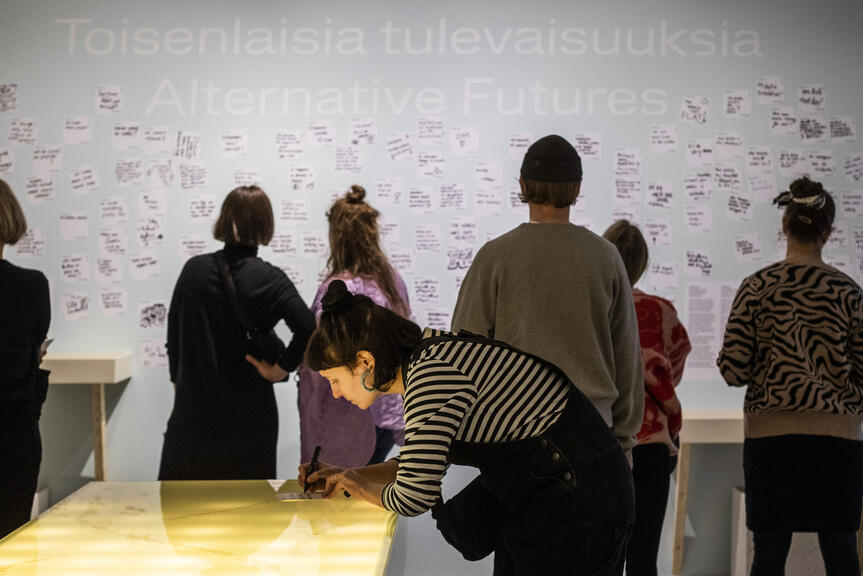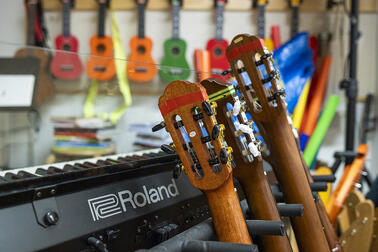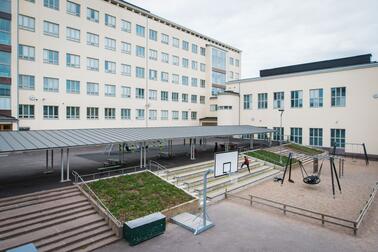
In autumn 2021, teachers and educators in Helsinki were invited to participate in the planning and developing of teachers’ further training that supports learners’ future skills. The aim of the training was to provide a broad perspective on futures thinking and the use of architecture and design education as part of it.
The training, co-developed with teachers, was piloted in autumn 2022 as further training for comprehensive school teachers. The aim was to provide teachers with tools to strengthen children and young people’s futures skills.
The further training was planned and realised in collaboration with the Learning Centre for Architecture and Design and The Children and Youth Foundation’s Futures School. Experts in pedagogy, culture and design from the city’s cultural services, Education Division and Urban Environment Division also participated in the planning process.
Hanna Kapanen, Educational Curator at the Design Museum, was actively involved in the education planning. In her recent blog post(Link leads to external service) she writes that there is an important place for promoting futures thinking and discussing the future as a part of schoolwork.
- A school system that promotes equality and equity has a unique opportunity to incorporate futures thinking and the perspectives of a sustainable future into schoolwork and planning education. In this way, the discussion about the future will reach learners of different ages and types in ways that are accessible to them. At the same time, we are creating a common and diverse future heritage to help us strive for a sustainable future, Kapanen writes.
- Everyone has the skill needed to take part in discussions about the future when this skill is practised in a safe environment. A teacher’s and educator’s own open attitude makes participation in future-oriented learning curricula safe and constructive. The lessons provide information and experiences through the different senses and take different ways of learning into account.
The plan is to expand the training to cover a larger number of Helsinki teachers.
Helsinki has schools dedicated to design education and emphasising design learning methods. Also, early childhood education, pre-primary education and basic education culture path contents ensure that all children and young people have access to various cultural content, including architecture and design.
Design education is creative problem-solving that crosses subject boundaries. It provides learners with tools to meet the challenges of the future and teachers with tools for developing instruction and phenomenon-based learning combining different subjects.


